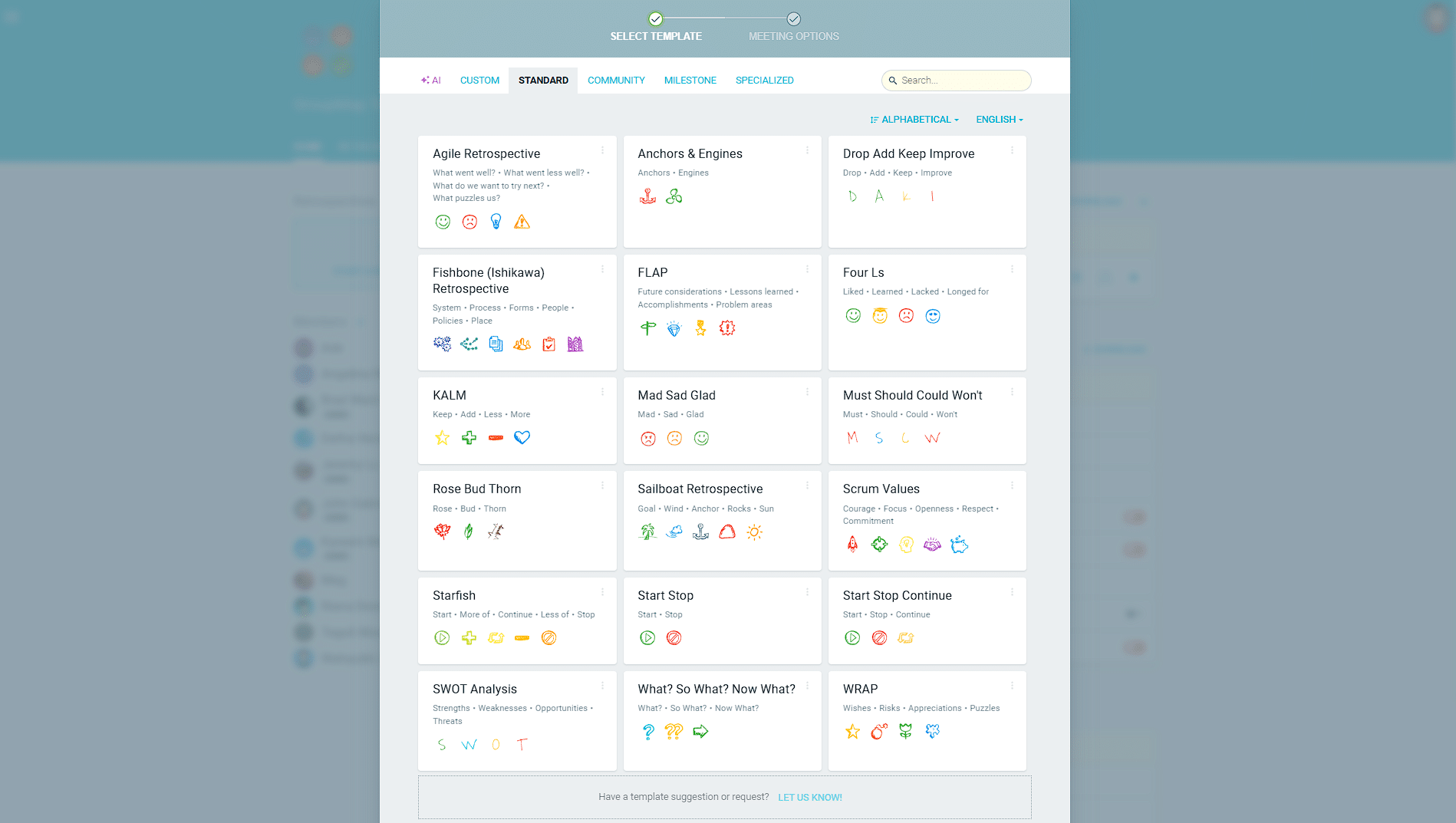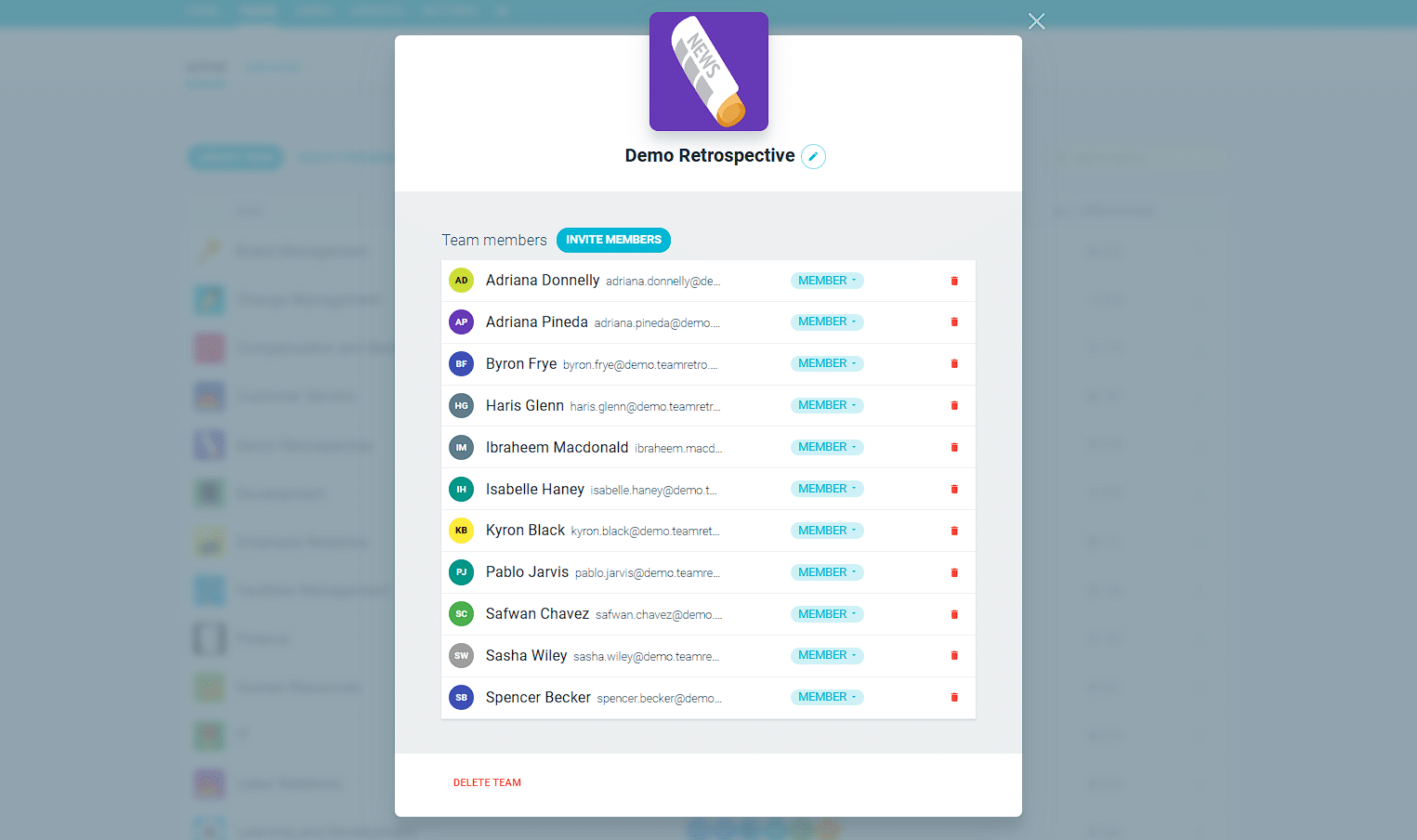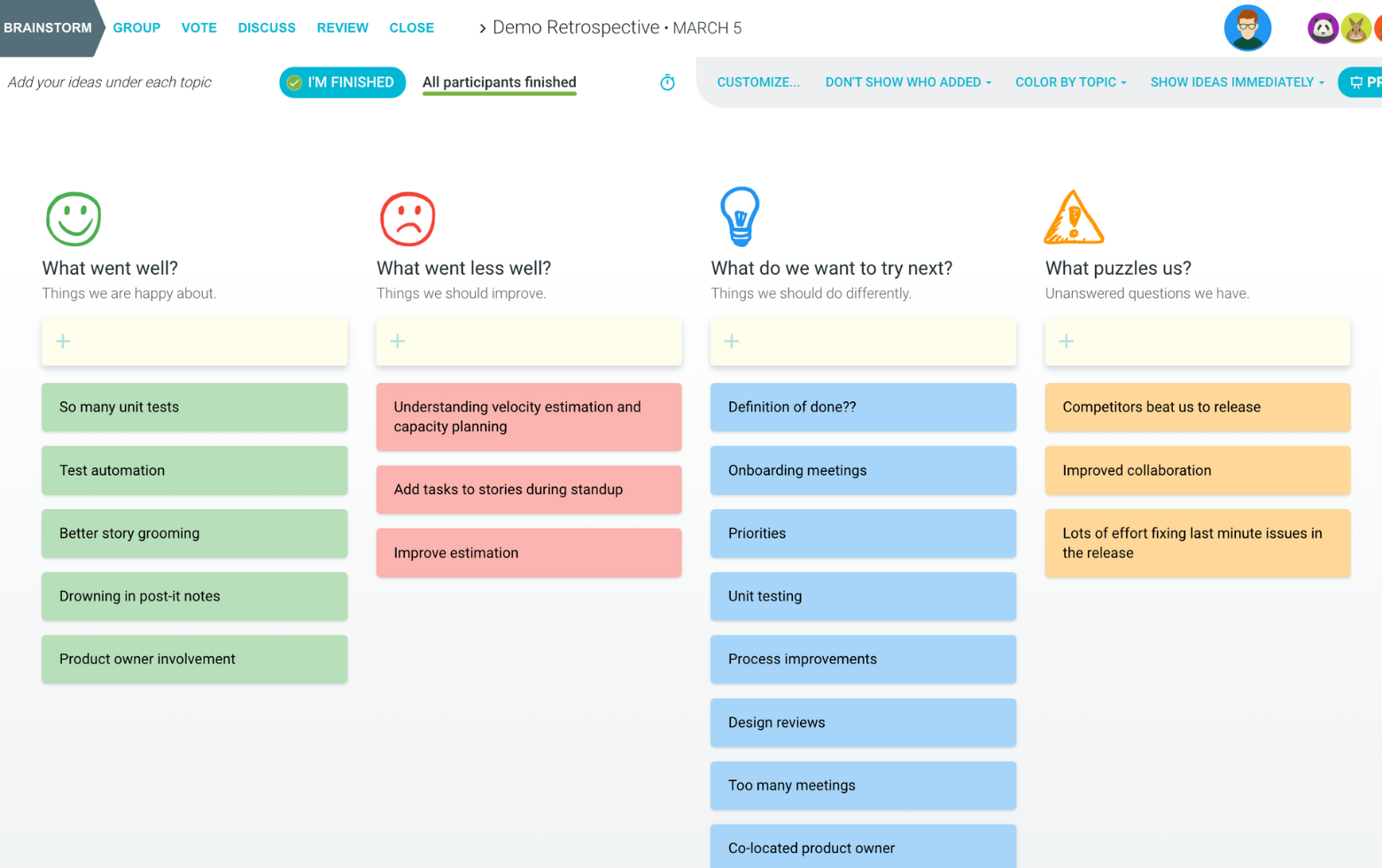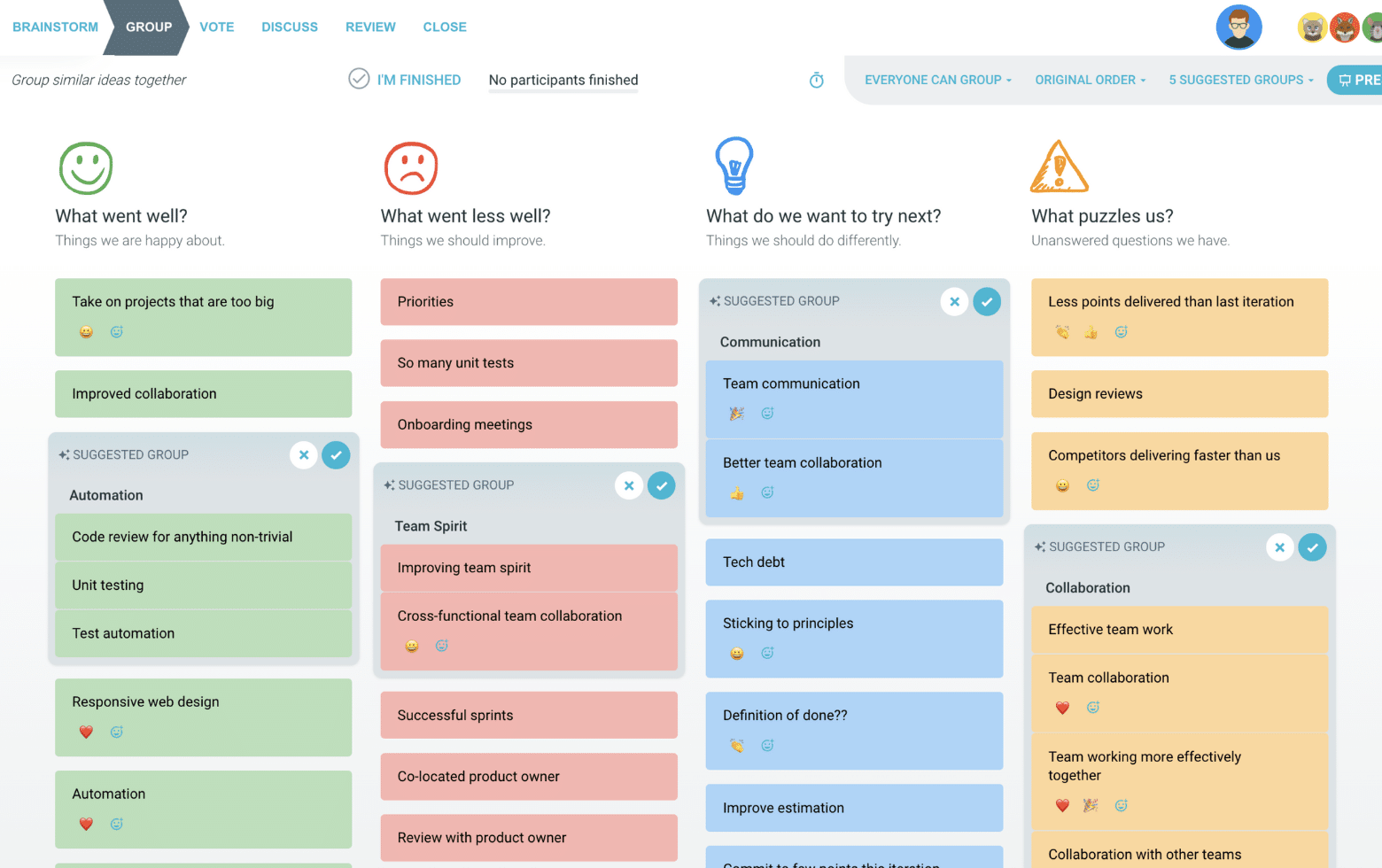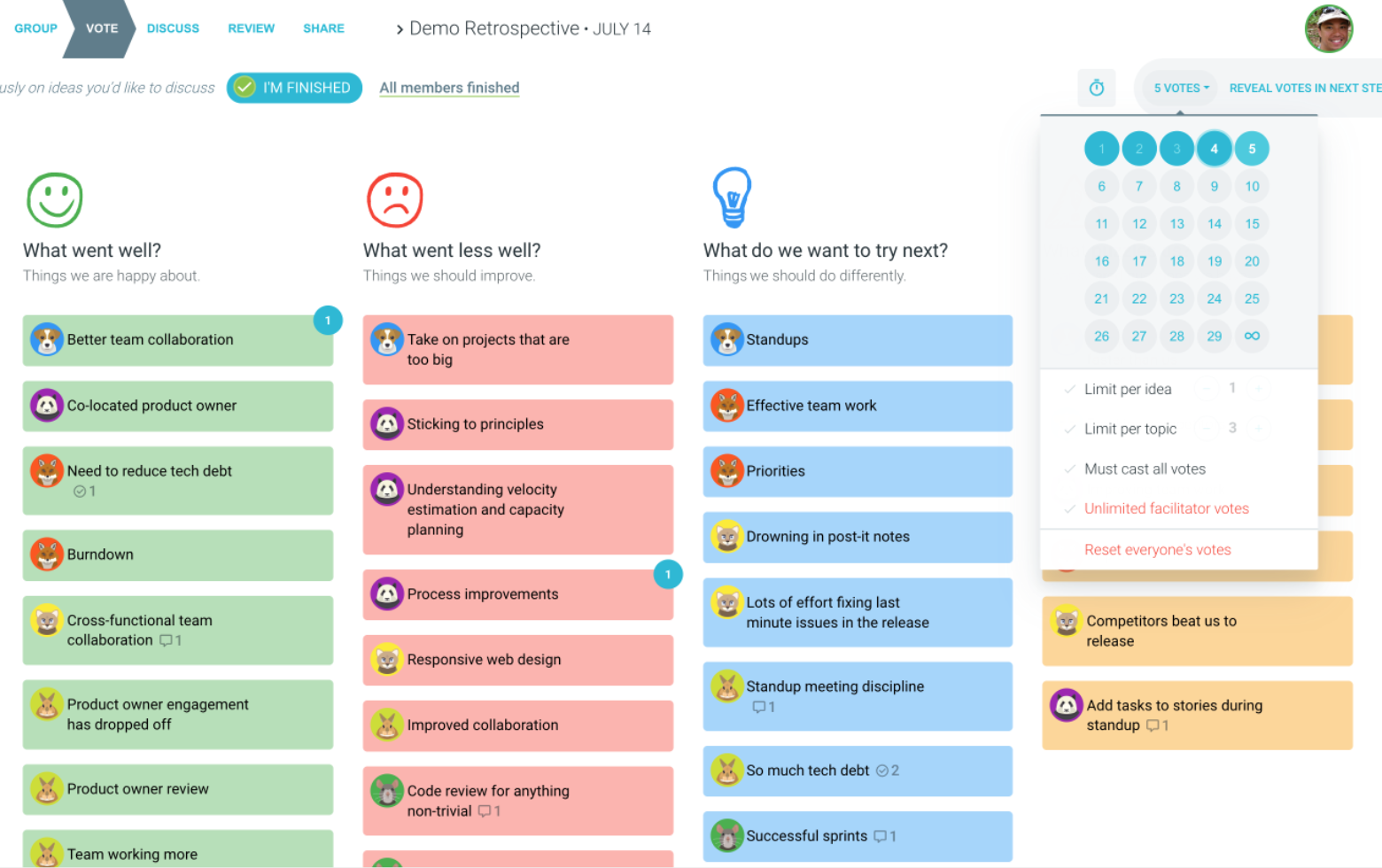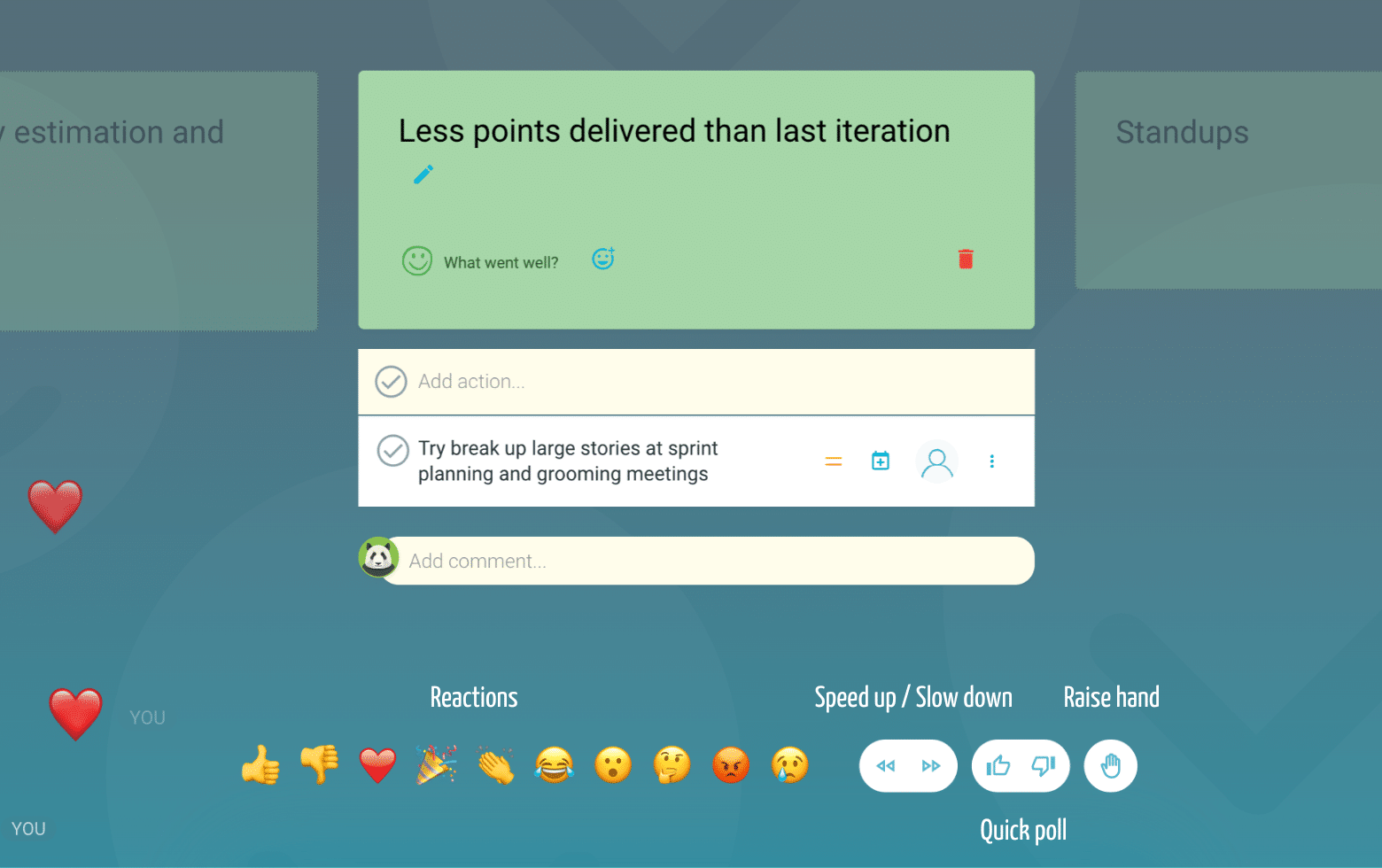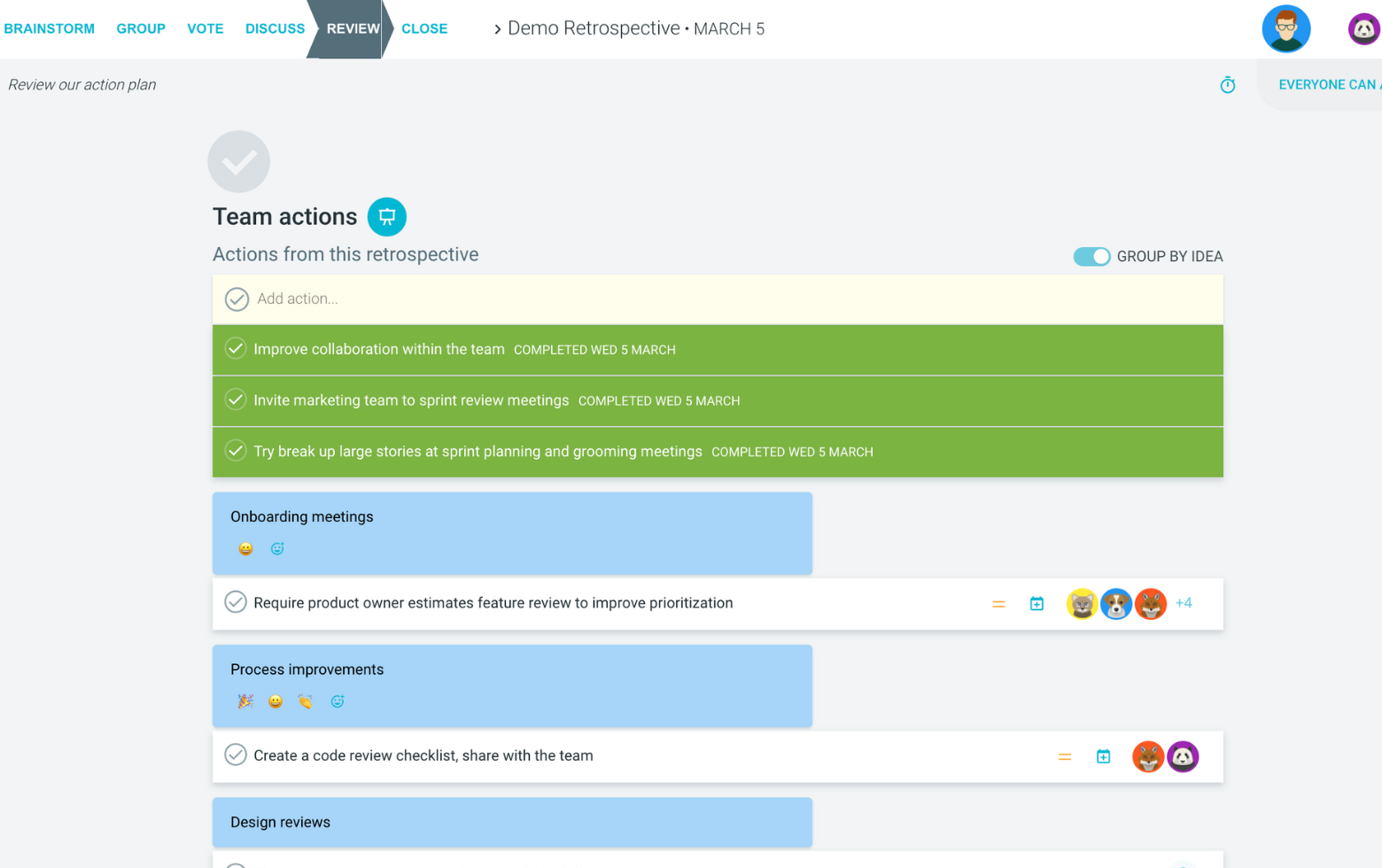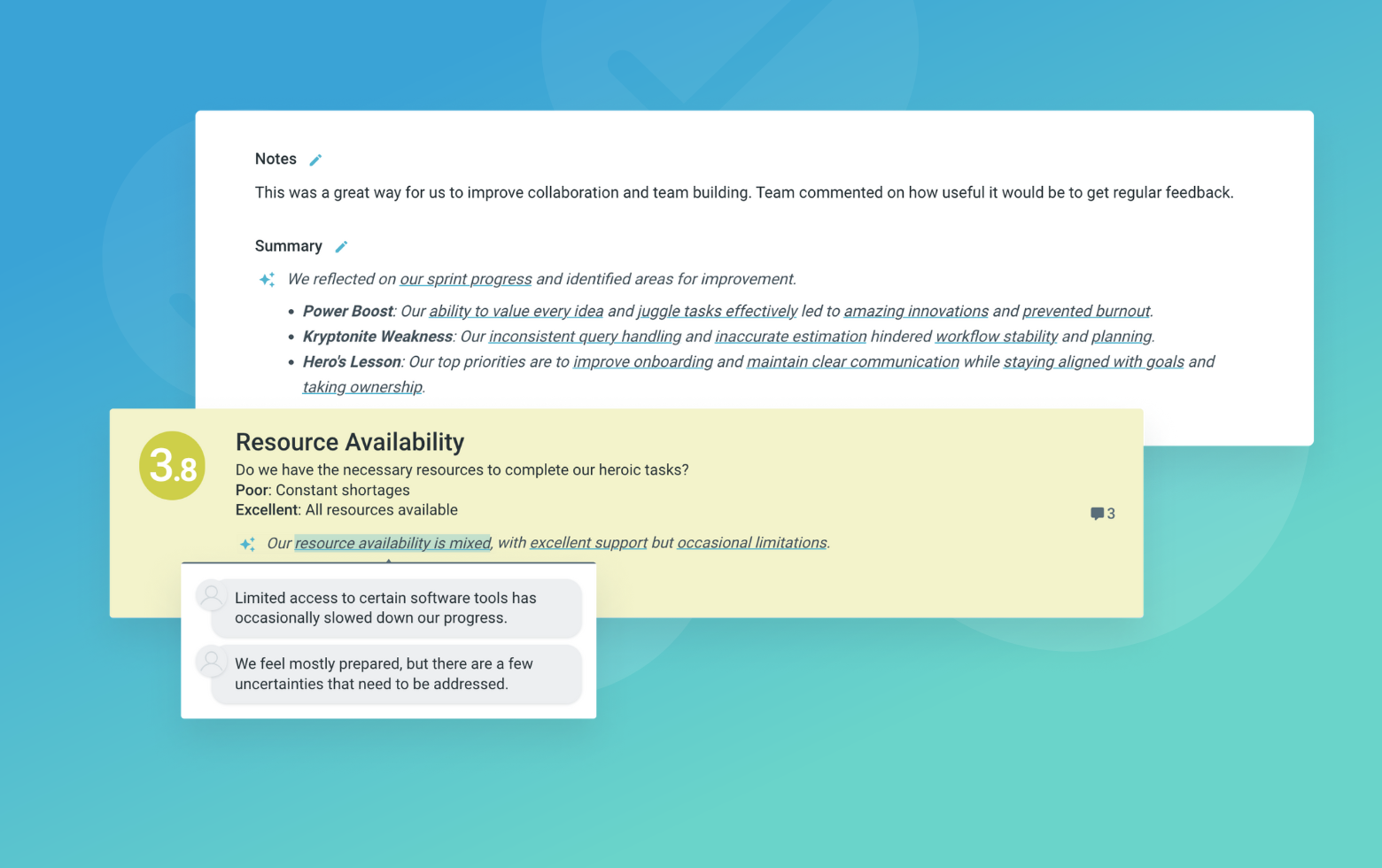The Sherlock Retrospective transforms team reflection into an engaging detective experience, inspired by the methodical problem-solving approach of literature's greatest detective, Sherlock Holmes. Using the power of deductive reasoning and careful observation, teams investigate their work processes, successes, and challenges.
This format encourages participants to think like detectives, examining evidence (data and experiences), following clues (patterns and insights), and solving mysteries (challenges and opportunities). By framing retrospective discussions in investigative terms, teams can maintain objectivity while diving deep into complex issues.
The structure promotes both analytical thinking and creative problem-solving, making it particularly effective for teams dealing with complex problems or seeking to understand root causes of recurring issues. The detective theme helps maintain engagement while ensuring thorough examination of team dynamics and project outcomes.
What is The Sherlock Retrospective
Case closed
What did we solve?
Focus on completed challenges and successful outcomes. Encourage participants to share specific examples of problems solved and goals achieved. Help the team identify patterns in their successful problem-solving approaches.
Clues
What helped us on the way?
Guide the team in identifying tools, practices, and behaviors that contributed to their success. Look for both obvious and subtle factors that helped progress. Encourage discussion about how these helpful elements can be leveraged in the future.
Elementary
What have we learned?
Focus on key learnings and insights gained during the period. Encourage participants to think about both technical and process-related discoveries. Help the team articulate these lessons in a way that can guide future actions.
Puzzles
What remains a mystery?
Help the team identify ongoing challenges, unknowns, and areas needing investigation. Encourage them to frame these as opportunities for learning rather than just problems. Guide the discussion toward potential approaches for solving these mysteries.
Suggested icebreaker questions
- If you were a detective, what would be your signature method for solving cases?
- What's the biggest mystery you've solved in your professional life?
Ideas and tips for your retrospective meeting
- Encourage participants to bring evidence and observations to support their points, just like a detective would
- Use the 'detective' theme to maintain objectivity and avoid blame - focus on facts and patterns
- Allow sufficient time for 'investigation' - don't rush to conclusions without examining all the clues
- Keep a 'case file' of actions and insights to track progress over time
- Use probing questions to dig deeper into issues and uncover root causes
- Create a safe space where team members feel comfortable sharing their observations and theories
.
How to run effective meetings with TeamRetro
Start Your Session in a Click
Log into TeamRetro and choose your template. Customise questions and the workflow to create your perfect retro for your team.
Create Your Team Easily – No Separate Accounts Needed
Brainstorm Individually – Free From Bias
Smart Grouping for Faster Insights
Fair, Flexible, and Fast Voting
Engage, React, and Capture Key Insights
Walk your team through ideas one by one with Presentation Mode. Stay in sync, spark real-time discussions, and capture feedback with comments, live reactions, and polls—all in one place.
Turn Ideas Into Action
Propose next steps with team buy-in, get AI-powered action suggestions, and keep everything in one place. Committed actions sync to your personal dashboard and integrate with your workflow tools—keeping you on track.
Save, Share, and Stay on Track
Get quick AI-powered summaries, add facilitator notes, and store retrospectives in your library for easy access. Schedule your next session and track published actions to keep your team accountable at the next retro.
Turn Team Data into Actionable Insights
Uncover trends, common themes, and key engagement metrics at a glance. Track sentiment shifts, analyze conversations, and monitor completed actions to drive continuous improvement.
